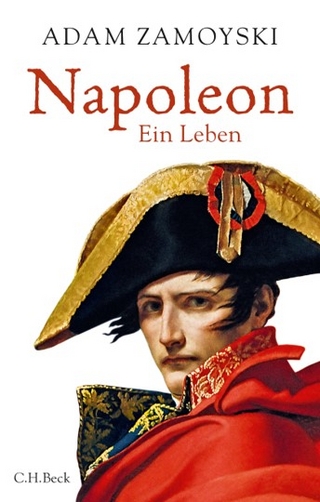
Visualizing Russia in Early Modern Europe
Cambridge University Press (Verlag)
978-1-009-41868-3 (ISBN)
In early modern Europe, the emergence and development of print culture proved a powerful new method for producing and disseminating knowledge of Russia through visual means. By examining the images of Russia found in travel accounts, pamphlets, maps and costume books, this study demonstrates how the visual shaped a dual understanding of these lands: Russia and Russians were portrayed as familiar, but the steppe and forest frontiers were seen as forbidding and exotic. As these images were reproduced and plagiarized in new formats, so too were their meanings – the idea of Russia was one which constantly shifted across genres, usages, and audiences. Nancy Kollmann examines the techniques harnessed by artists and publishers to suggest the authenticity of their publications, and explores in turn how these complex depictions of Russia contributed to Europeans' understanding of themselves.
Nancy Kollmann is the William H. Bonsall Professor in History at Stanford University. Kollmann's research focuses on Russia in the early modern period, and she holds particular interests in politics, law, empire in action, and the role of the visual. Previous publications include The Russian Empire 1450-1801 (2017) and Crime and Punishment in Early Modern Russia (Cambridge, 2012).
Introduction: early modern print culture; Part I. Encountering Russia Visually: 1. Imagery in an ocularcentric century; 2. Humanism encounters Russia; Part II. Sigismund von Herberstein: 3. Rerum Moscoviticarum Commentarii (1549) as humanist chorography; 4. Herberstein's use of the visual; Part III. The Muscovy Company Maps Eurasia: 5. The Muscovy company as knowledge network; 6. Map as chorography; 7. Visuality explodes: Russians in turn of the century sources; 8. Adam Olearius: eyewitness extraordinaire; 9. Olearius: text and image order the world; Conclusion.
| Erscheinungsdatum | 30.08.2024 |
|---|---|
| Zusatzinfo | Worked examples or Exercises |
| Verlagsort | Cambridge |
| Sprache | englisch |
| Maße | 160 x 236 mm |
| Gewicht | 680 g |
| Themenwelt | Kunst / Musik / Theater ► Kunstgeschichte / Kunststile |
| Geisteswissenschaften ► Geschichte ► Regional- / Ländergeschichte | |
| ISBN-10 | 1-009-41868-8 / 1009418688 |
| ISBN-13 | 978-1-009-41868-3 / 9781009418683 |
| Zustand | Neuware |
| Informationen gemäß Produktsicherheitsverordnung (GPSR) | |
| Haben Sie eine Frage zum Produkt? |
aus dem Bereich


